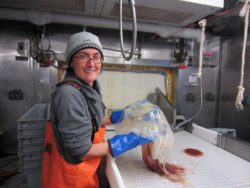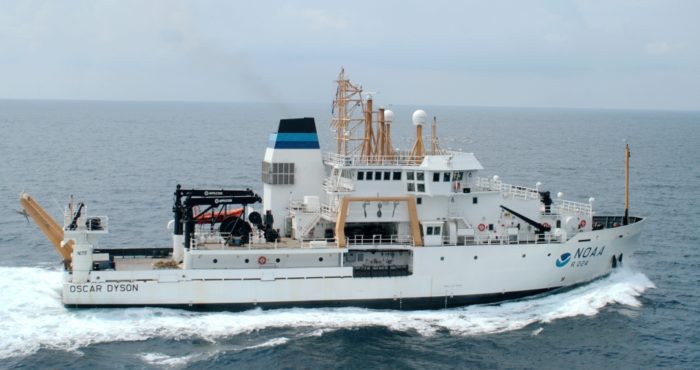Fishing for Information

In 2013, Britta Culbertson sailed on a Fisheries-Oceanography Coordinated Investigations (FOCI) research cruise, which was conducting a juvenile walleye pollock and forage fish survey in the Gulf of Alaska. Learn more about Britta’s experience aboard the NOAA Ship Oscar Dyson by reading her NOAA Teacher at Sea blogs.
Grade Level: 9-12th grade
Subjects (Focus/Topic): Life Science, Biology – analyzing fisheries data, ecosystems, biodiversity, fisheries management, observing trends, developing testable questions, making inferences and drawing conclusions based on evidence, using mathematical or computational representations to support explanations, communicating scientific evidence.
Average Learning Time: Two to three 45-55 minute class periods for research and data analysis, outside of class time for presentation preparation (homework), one to two periods for presentation/sharing.
Description: After selecting and analyzing fisheries data from NOAA, students develop research questions, analyze the data and draw conclusions, which are then represented visually in the form of a poster presentation and shared with the class.

